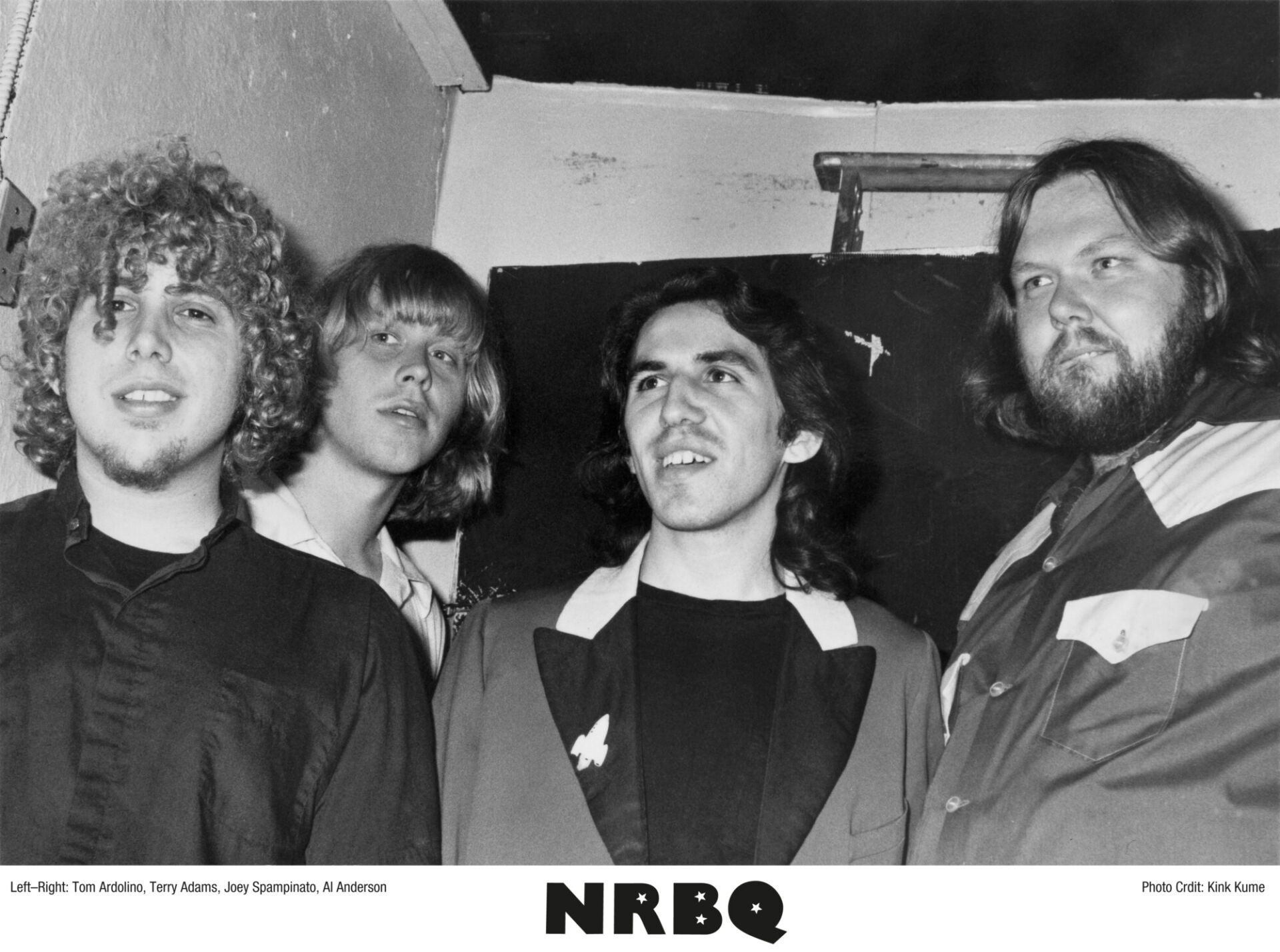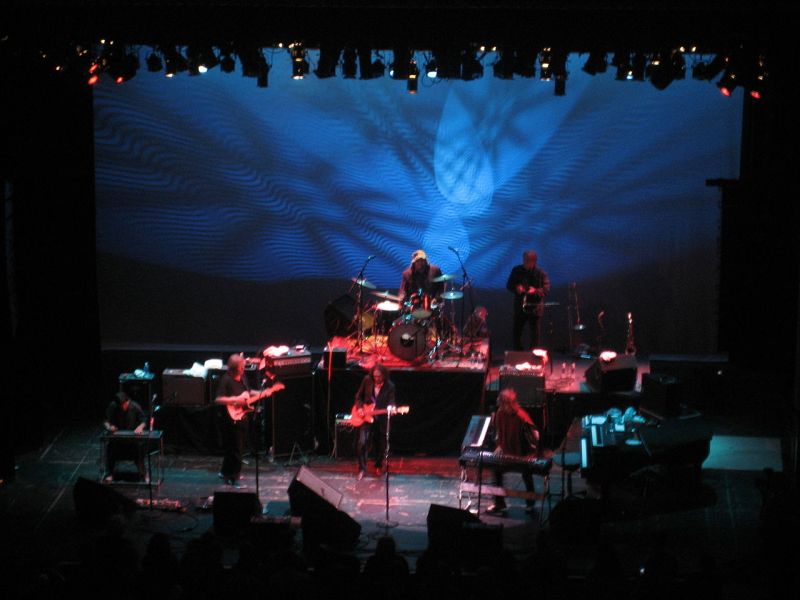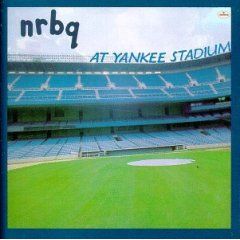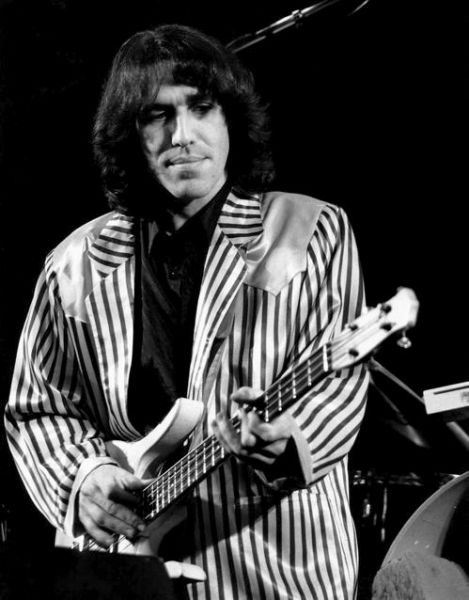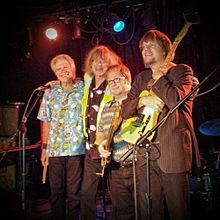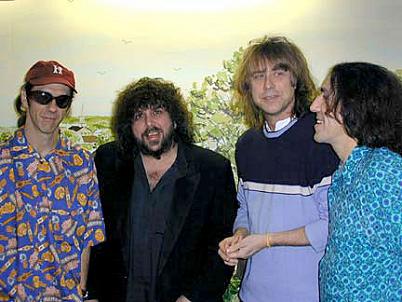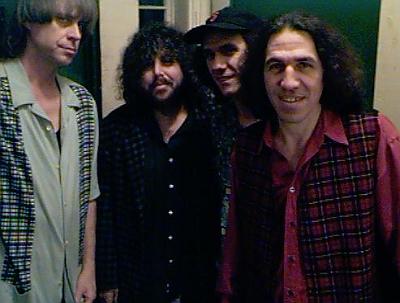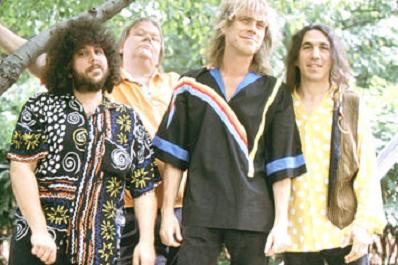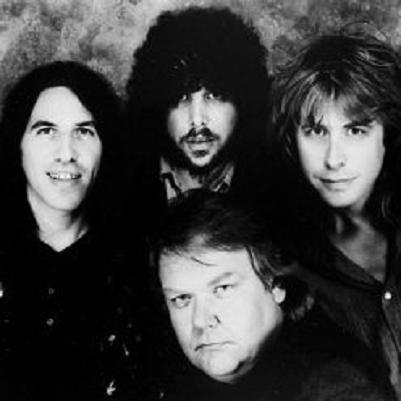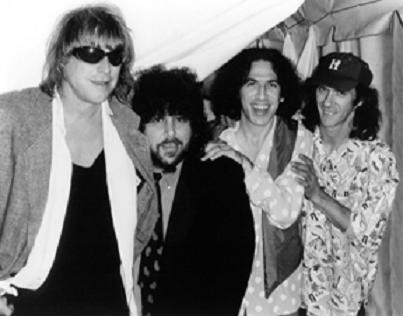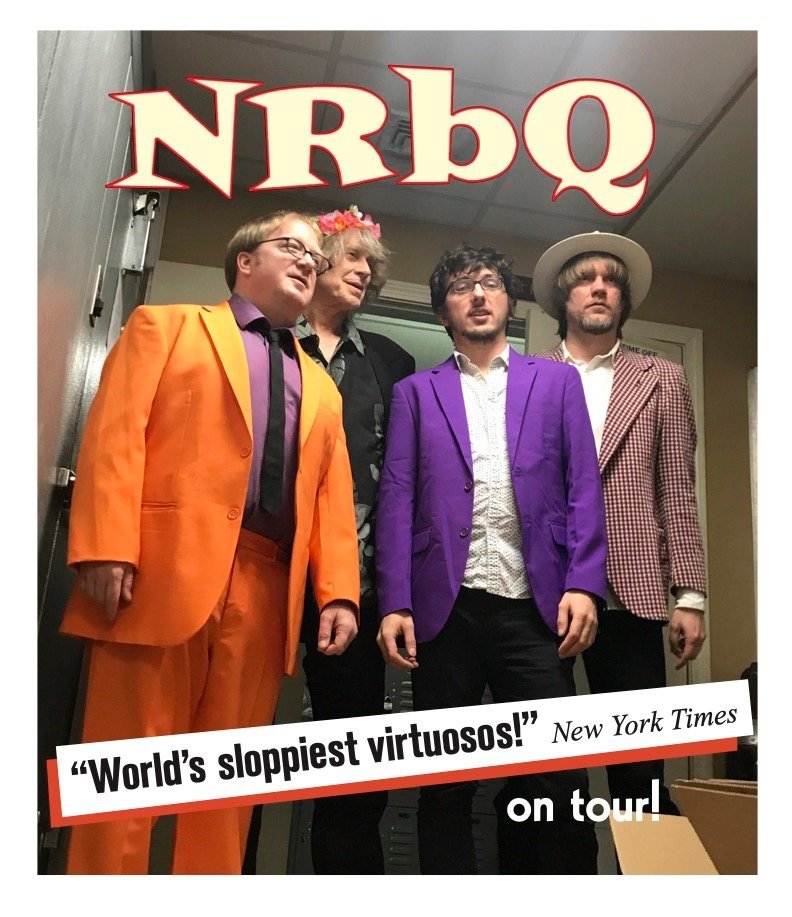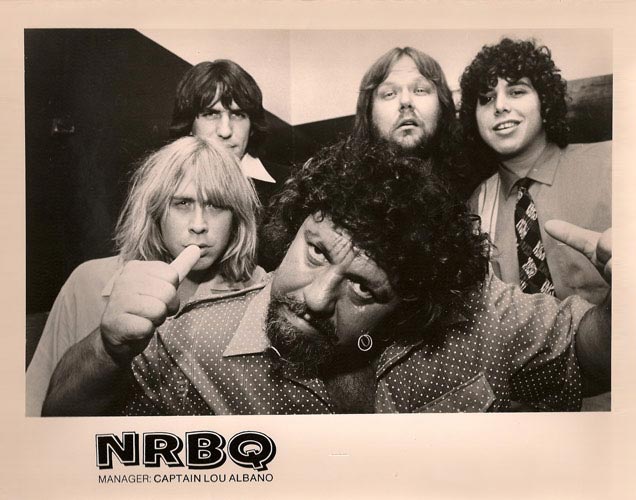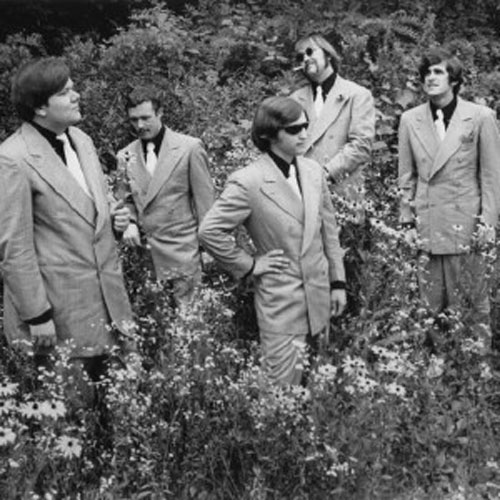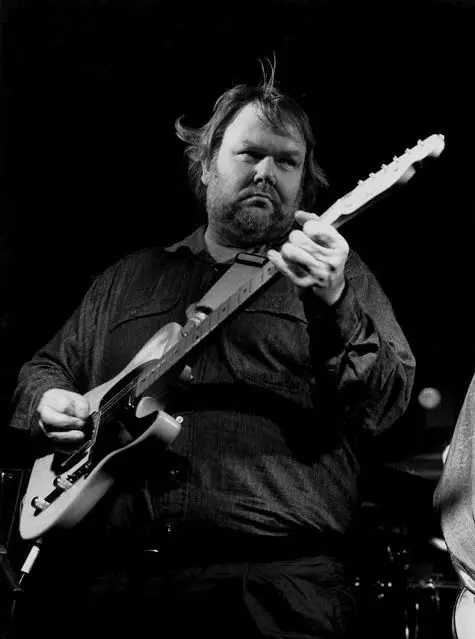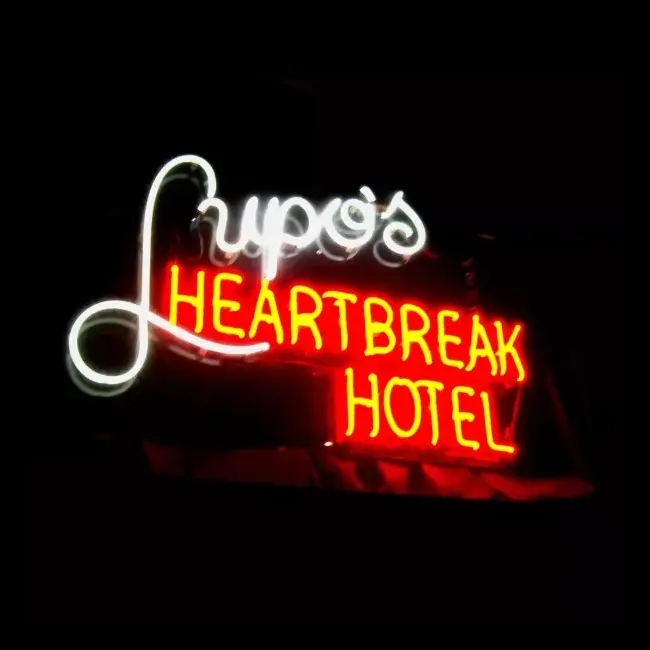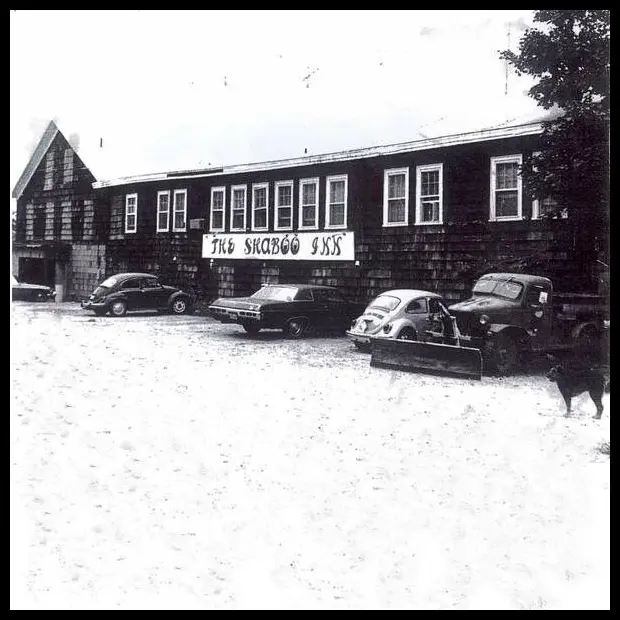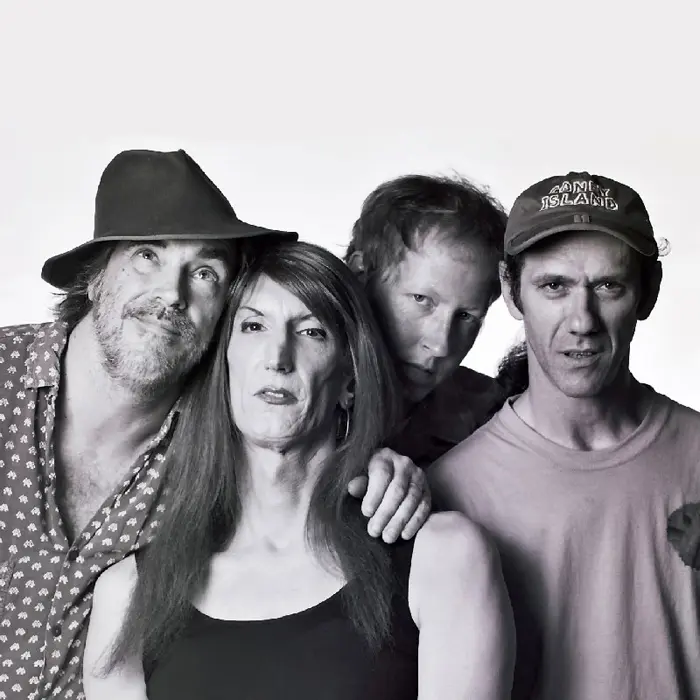NRBQ
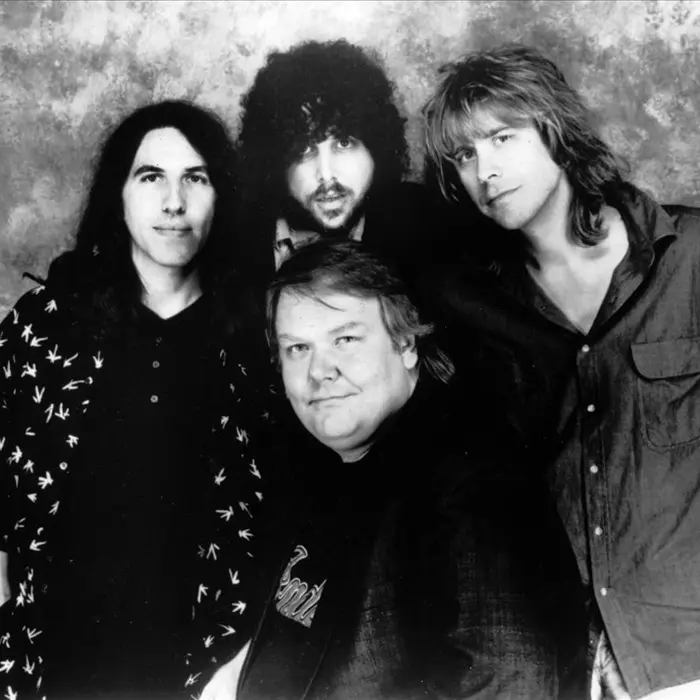
NRBQ never had a hit record and were never played much on the radio. But for more than 50 years, they built and preserved a niche market and fandom based on a blend of R&B, country, novelty, rockabilly and a tinge of jazz.
Originally called the New Rhythm & Blues Quintet, officially known later by the initialism NRBQ and widely called simply “The Q,” the band came together in 1965, the remnants of several other bands. Over the next five decades, dozens of band members would come and go and they’ve recorded 22 studio albums and 11 live albums to date while maintaining their truly inimitable, eclectic and unmistakable sound largely due to the influence of co-founder Terry Adams, the band’s one and only remaining original member.
FORMATION, AL ANDERSON, KEITH SPRING, THE WHOLE WHEAT HORNS
From humble beginnings in their home near Louisville, Kentucky, brothers Terry and Donn Adams began rehearsing and inviting other band members to join including friend, guitarist and country-styled singer Steve Ferguson, formerly of The Mersey Beats (no relation to The Merseybeats from the UK) and Jimmy Orten, formerly with Soul Inc. on bass and vocals. In 1966, that iteration left Kentucky for Miami, where keyboardist Terry Adams and guitarist Steve Ferguson joined up with several members of another band called The Seven of Us – Joey Spampinato (bass) and Frank Gadler (vocals) – along with local drummer Tommy Staley.
After regrouping back in Louisville and eventually moving to New York City, the first NRBQ was formed and they recorded their debut album for Columbia Records in 1969. Around this time, they also collaborated with rockabilly legend Carl Perkins on his album Boppin’ the Blues.
The first New England connection for NRBQ began with the addition of Al Anderson, formerly of the Connecticut-based garage rockers The Wildweeds. A brilliant guitarist and a powerhouse vocalist, he first appeared on their 1972 album Scraps. The LP Workshop followed a year later and included the song “Get That Gasoline Blues,” which was the only track of theirs to become a hit, reaching #70 on the Billboard Hot 100 in 1974. Around this time, they added another Louisville refugee to the lineup, tenor saxophonist Keith Spring; he and Donn Adams came to be known as The Whole Wheat Horns. They had several New England-area hits, most notably 1977’s instant-classic “Ridin’ In My Car.”
FAMOUS LIVE SHOWS, LINEUP CHANGES
The Q were renowned along the Eastern Seaboard for their adventurous live shows, playing in an unpredictably wide array of music styles, touring steadily through popular in college towns and better known through word-of-mouth than from their records. In yet another New England connection, the Q drum chair was filled by Springfield, Massachusetts’ native Tom Ardolino. A fan of the band, he began corresponding and trading tapes with Terry Adams, which led to him befriending the band.
At one live show, when original NRBQ drummer Tom Staley didn’t return for an encore, Adams invited Ardolino to fill in. He performed well enough that when Staley left the band in 1974, his bandmates agreed that Ardolino was the natural choice as successor. To add yet another New England connection, in 1994 Anderson departed the group to become an award-winning Nashville songwriter for many country-western acts. He was replaced by Spampinato’s younger brother, Johnny, who was playing in The Incredible Casuals.
“BEST BAR BAND IN THE US,” 2007-2007 HIATUS, REFORMATION
Eventually, NRBQ became closely associated with Western Massachusetts, often appearing in live settings in and around Northampton, and were regulars at places like Lupo’s Heartbreak Hotel in Providence, the famed Shaboo Inn in Willimantic, Connecticut and Bushnell Park in Hartford. Recording on their own label, Red Rooster, they became known as “the best bar band in the US” due to their famous “magic box” routine and vast knowledge of Western pop music.
As time passed, further personnel adjustments, health issues and other changes have shaken their career more than once, but they carry on with Adams leading. After an engagement in Milwaukee in 2004, NRBQ went on nearly three-year hiatus after Adams was diagnosed with Stage 4 throat cancer. In April 2007, the band played two “38th Anniversary” performances in Northampton, the first NRBQ shows since 2004. Both Anderson and Johnny Spampinato appeared in the lineup, along with The Whole Wheat Horns’ Donn Adams and Jim Bob Hoke, and unannounced guest appearances by John Sebastian, original NRBQ drummer Staley. Gadler, former lead vocalist, also made an appearance.
CURRENT LINEUP, DEATHS
NRBQ maintains a rabid following from decades of live shows and has been known to perform without a set list, which makes them, in the words of AllMusic’s Mark Deming, “a stellar and wildly unpredictable live act.” In addition to its own compositions, the band performs a broad range of cover material and audience requests. The Q lives on, with the current lineup of Terry Adams (keyboards, vocals, 1966-present), Scott Ligon (guitar, vocals, 2011-present), Casey McDonough (bass, vocals, 2012-present) and John Perrin (drums, 2015-present). Steve Ferguson died of cancer in October 2009, Tom Ardolino died in January 2012 following a long illness and Bobby Lloyd Hicks died in February 2017 of bronchiectasis.
(by Steve Haag and Karl Sharicz from material provided by Stuart Troutman)

